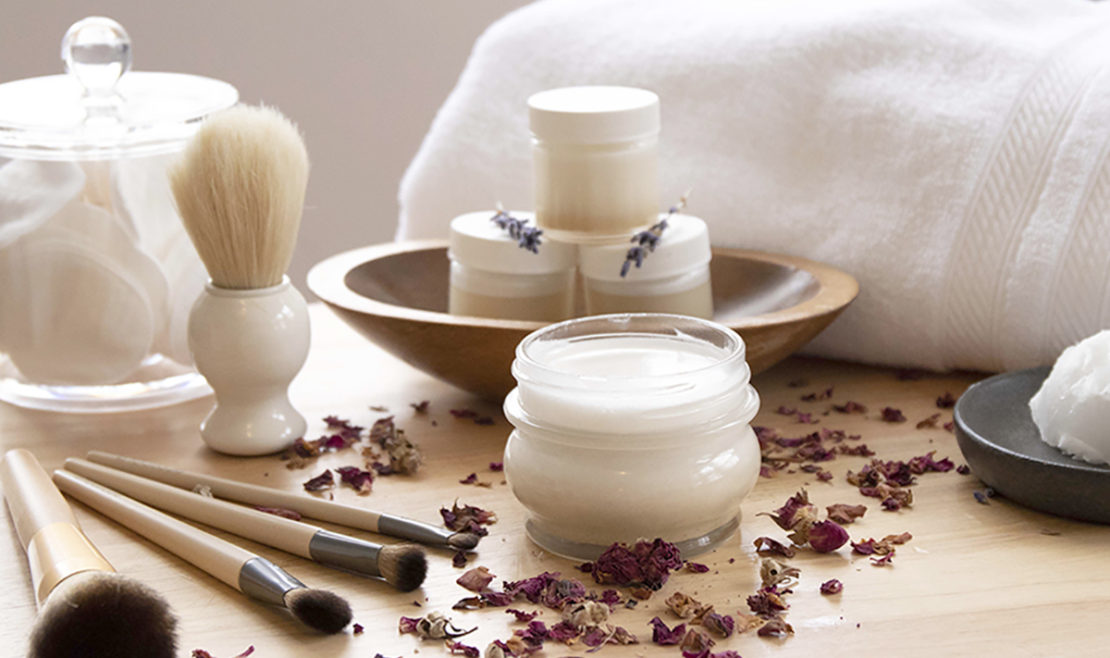
How To Find The Best Holistic Skin Care Routine For You
Beauty is certainly more than skin deep. However, the health and beauty of your skin should not be overlooked or dismissed as a matter of mere aesthetics. Your skin serves as far more than a lovely facade. Skin tissue is not only vital for physical protection; it is also a clear reflection of the body’s deep internal state of being. Vibrant health will manifest as a clear, glowing complexion. Conversely, when skin health is disrupted, those external clues provide a roadmap to the imbalances that may be present in the deeper tissues of the body.
This article will help you find the best holistic skin care routine for you. Beyond learning holistic beauty tips, it is important to view your skin health through a wide lens and to better understand how beautiful skin is intimately linked to whole body health.
The First Line Of Defense
Your skin forms a physical barrier between your internal body and the outside world, essentially, differentiating between what is you and what is not you. Your skin is the first barrier against external pathogens, such as viruses and bacteria and, therefore, is an integral aspect of the immune system. This also means that compromised skin health can mean compromised immune health.
Interestingly enough, according to Ayurveda, our ojas, or immune health, cannot be nourished until all other tissues of the body are pampered and fed. We can take this to mean that healthy skin leads to strong immunity, and strong immunity will reflect as healthy skin, therefore, developing the best holistic skin care routine for you is essential to strong immunity and overall vibrant health.
According to David Frawly in his book, Ayurvedic Healing, the human body is made up of seven tissues, called dhatus, which are:
- Rasa: plasma
- Rakta: blood, particularly the hemoglobin
- Mamsa: muscle tissue
- Meda: fat or adipose tissue
- Asthi: bone tissue
- Majja: nerve tissue
- Shukra: reproductive tissue
Ojas, which is our source of immunity and vitality, is not an actual tissue but a subtle essence that is dependent upon the health of the seven dhatus to receive nourishment. Only after every dhatu is adequately nourished can one’s ojas be built.
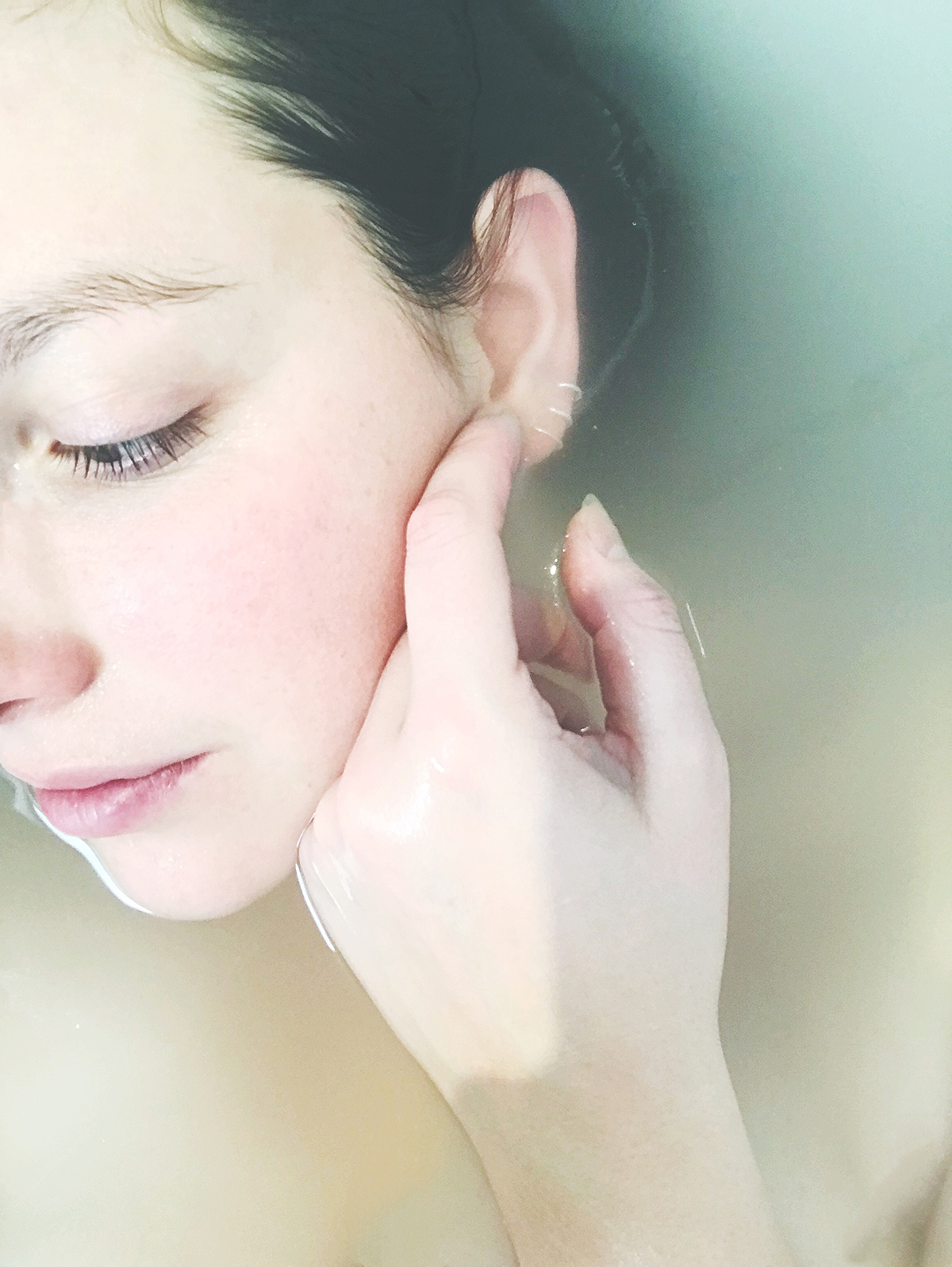
Fluid Balance: Getting It Just Right
The rasa dhatu is the most superficial bodily tissue and is integral to skin health. Having a healthy rasa is also essential for building ojas.
As described above, rasa translates to plasma, but it also corresponds to the fluids of the body. When one’s rasa is deficient, the result is dry skin, dry hair, chapped lips, and even constipation due to internal dryness. Excess rasa shows up as moist, clammy skin, excess mucus, swelling, and water retention. Neither of these situations is ideal so the goal, not surprisingly, is balance. Discovering the best holistic skin care routine for your constitutional type will help you find the sweet spot of rasa balance.
In Ayurveda, both vata and pitta doshas can cause excessive dryness. Vata dosha is dry by nature, so vata types tend toward dry skin, hair, and eyes. However, a chronic pitta imbalance can also cause dryness, as long-term excess heat can dry up the rasa dhatu. If you are someone who experiences chronic dry skin, consider eating a rasa building diet and supplementing with demulcent herbs. These are important aspects of finding the best holistic skin care routine for you.
Foods that help build rasa include fats such as ghee, sesame oil, avocado oil, coconut oil, and olive oil. Ghee, flaxseed oil, and sesame oil are ideal for those with a cool or cold constitution. Ghee, avocado, coconut, and olive oils are helpful for those who run warm. (Ghee is easily digested and is cool but not cold, so is acceptable for folks of all constitutional types). Also, foods should generally be cooked and moist for those looking to build rasa. Eating plump, juicy fruits and drinking plenty of hydrating fluids is also key. Food that is dry, raw, and dehydrated should be avoided.
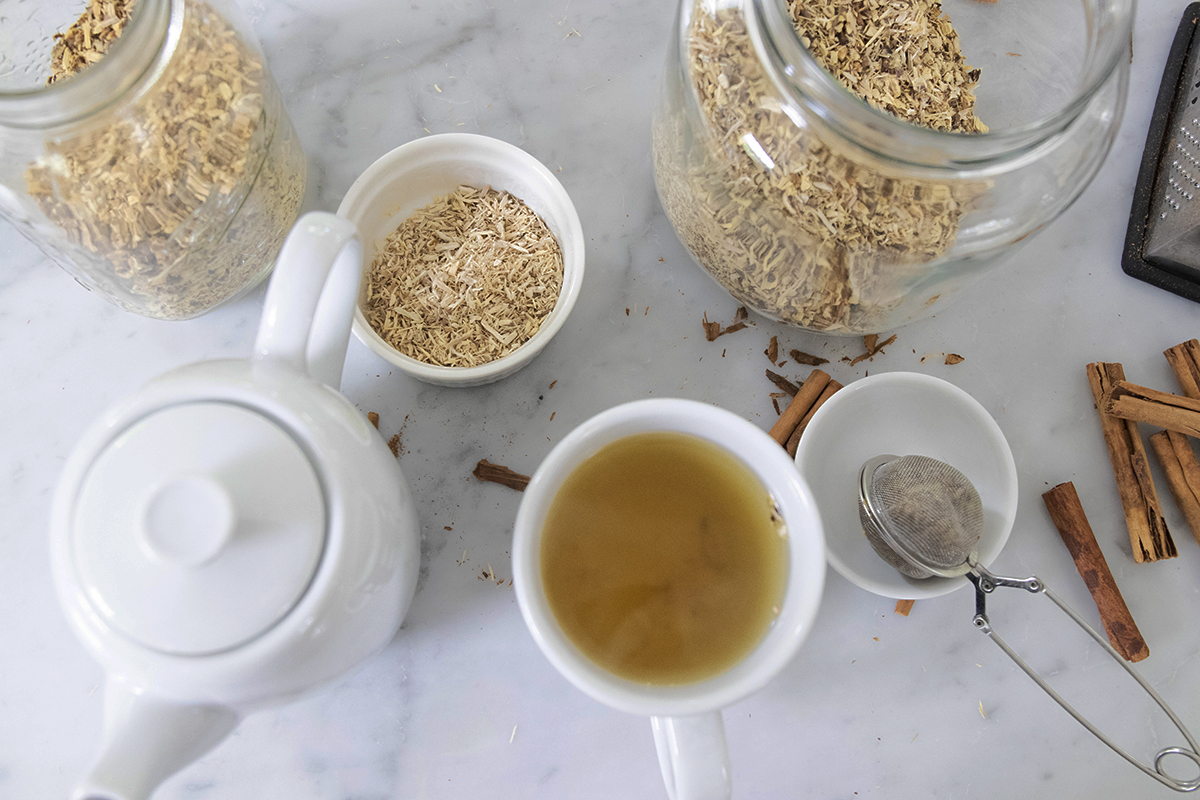
Special demulcent herbs give a nice boost to a rasa building diet and holistic skin care routine. Licorice (Glycyrrhiza glabra) root and marshmallow (Althea officinalis) root tea is a simple demulcent beverage. This can be made from the powdered roots, or a decoction can be made from the cut and sifted parts. Also, shatavari (Asparagus racemosus) root taken in powdered form or infused in ghee is very helpful for building and maintaining the moisture of the body.
Rasa Builder
This formula was designed for a client who was suffering from dry eyes and overall systemic dryness, and it would complement the holistic skin care routine of a person looking to moisturize dry skin from the inside out.
I usually measure the powdered herbs in grams by weight, but you can approximate the ratios by measuring in teaspoons or grams by volume if you do not have access to a metric scale. We call this using “parts,” and you can learn more about this way of measuring ingredients in our post, What Exactly Are “Parts,” In Herbal Recipes. I find it helpful to make 2-3 ounces of this mixture at a time. It will maintain its potency for up to 6 months if stored in a cool, dry place out of direct sunlight.
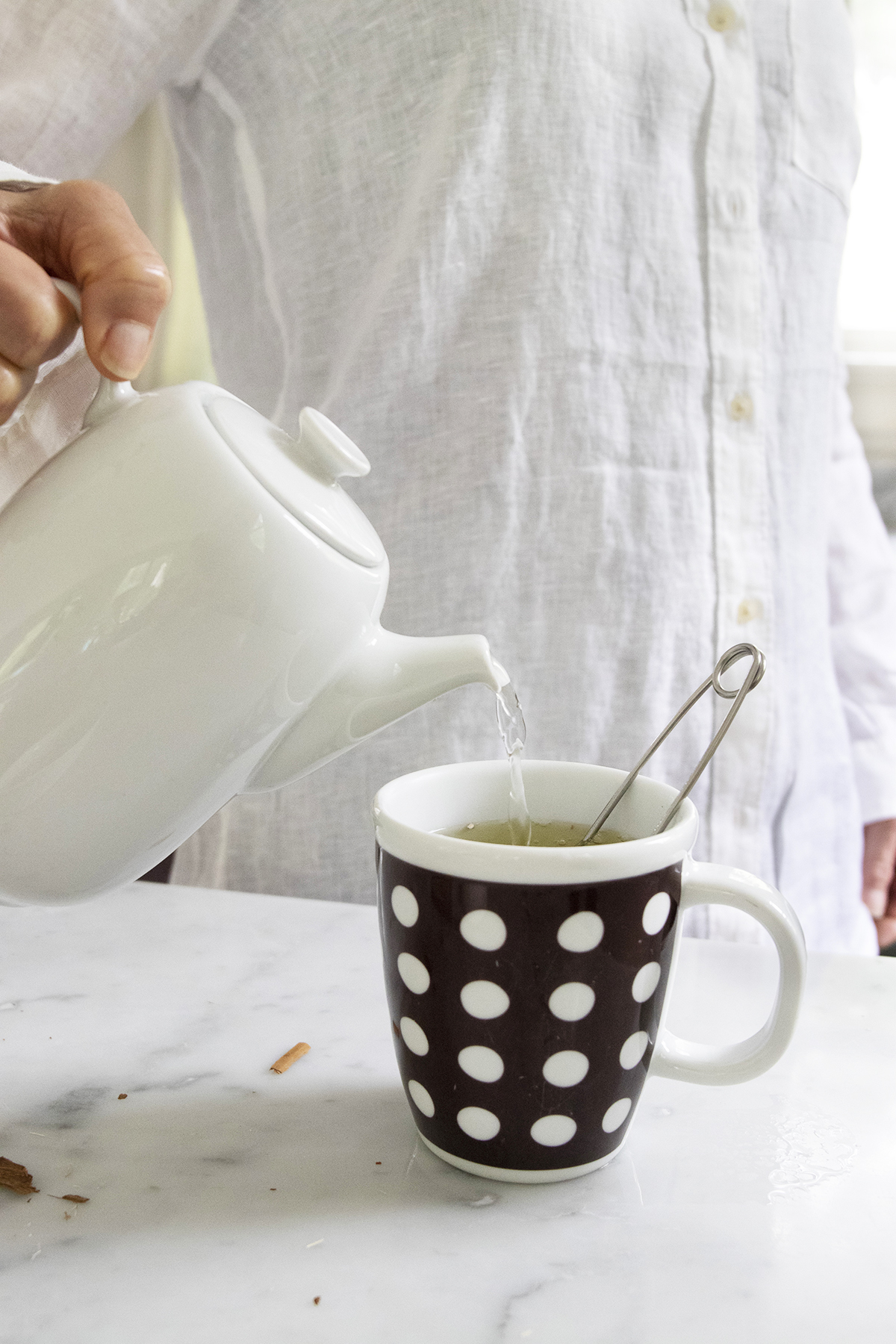
Rasa Builder
4 parts licorice (Glycyrrhiza glabra) root powder
2 parts sarsaparilla (Smilax officinalis) root powder
1 part shatavari (Asparagus racemosus) root powder
1 part marshmallow (Althea officinalis) root powder
1 part cinnamon (Cinnamomum verum) bark powder
- Add all parts into an airtight storage container and mix well. Stir 3/4 teaspoon of the mixture into 1/2 cup of hot water and drink two times per day between meals.
Too Much Of A Good Thing
Though we all tend toward drier skin as we age, not everyone needs to build rasa all the time. In Ayurveda, kapha types are known for their smooth, thick, lustrous skin. This is generally wonderful, but in damp, humid weather, kapha types could end up with too much of a good thing. Astringents such as witch hazel (Hamamelis virginiana) bark and aerial parts, diaphoretics such as yarrow (Achillea millefolium) aerial parts, lymph movers (mentioned below) and warming digestive herbs such as dried ginger (Zingiber officinale) rhizome and black pepper (Piper nigrum) fruit are helpful for those who are prone to water retention, swelling, and overall sluggishness. Witch hazel is helpful applied externally and yarrow, ginger, and black pepper can be taken internally as teas or tinctures. Warming spices such as ginger and black pepper can also be used in ample amounts when cooking.
The classic ayurvedic practice known as garshana is helpful for moving sluggish lymph. Garshana is the practice of dry brushing the skin. This is typically done with either a body brush or a pair of silk gloves, and it is best done in the morning before bathing. The skin is gently brushed or massaged in circular motions towards the heart in order to encourage proper lymph drainage. Also, lymph moving herbs such as red clover (Trifolium pratense) flower, calendula (Calendula officinalis) flower, and burdock (Arctium lappa) root can be taken internally as teas or tinctures (Groves, 2016) to encourage the healthy circulation of lymph.

Managing Heat And Inflammation
When looking for the best holistic skin care routine skin, it is important to remember that the skin is a detoxification organ. When metabolic wastes build up and are not effectively excreted through other eliminatory channels, the skin tends to take on the detox burden. Blemishes, acne, and rashes generally indicate an overload of metabolic wastes, specifically considered to be pitta ama in ayurvedic terms, or wastes of a pitta variety.
In order to clear excess skin clogging ama, alteratives and liver support herbs, such as turmeric (Curcuma longa) rhizome and aloe (Aloe vera) leaf, are helpful. Aloe vera can be applied externally and the food grade inner filet can be taken internally. Turmeric can be taken as a tea, capsule, and used freely in cooking. For external skin care, this cooling pitta-calming toner is a nice asset to your holistic skin care routine.
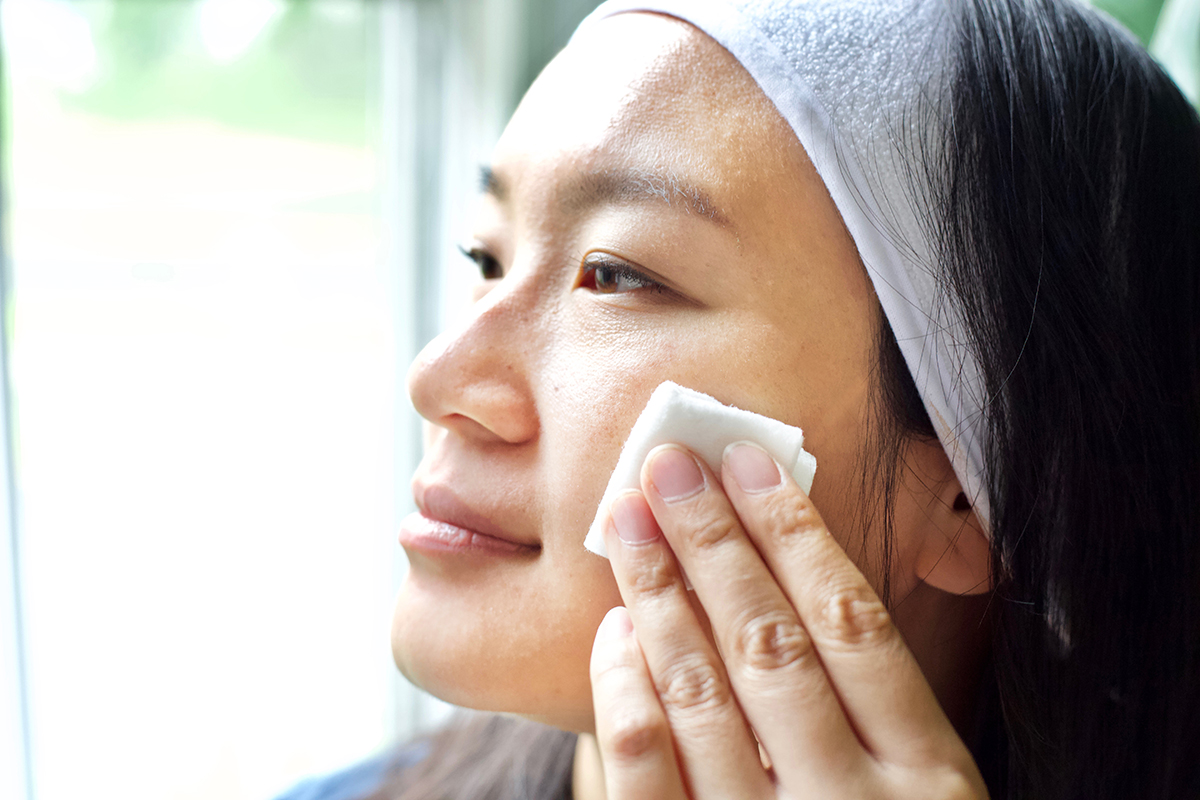
Pitta-Purifying Skin Toner
Recipe adapted from Brenda Igler and the California College of Ayurveda.
1.5 grams powdered neem (Azadiracta indica) aerial parts
1.5 grams rose (Rosa spp.) petals
1.5 grams calendula (Calendula officinalis) flower
4 tablespoons rose water
3 tablespoons aloe (Aloe vera) juice
1 tablespoon apple cider vinegar
- First combine the rosewater, apple cider vinegar, and aloe juice in a glass canning jar.
- Next, add powdered neem, rose petals, and calendula flowers. Cover loosely with a lid and steep overnight. Place the jar under the moonlight for added cooling effects.
- The next morning, strain through a layered cheesecloth and store the liquid in a sealed glass jar or spray bottle in the refrigerator for 1-2 weeks before making a fresh batch.
- To use as a toner, pour the liquid into a spray bottle and spritz on the skin after cleansing or swab onto clean skin using a cotton ball.
Gotu kola (Centella asiatica) aerial parts is a noteworthy herb especially when it comes to finding the best holistic skin care routine for fiery pitta types. Gotu kola is commonly used in Ayurveda as a cool nervine and is helpful for supporting a calm and clear mental state. However, it also has a prabhav, or a special effect on the skin. In addition to nourishing the nervous system, gotu kola helps repair collagen, strengthens capillaries, and promotes healthy circulation (Groves, 2016).
A Holistic Skin Care Routine: From The Inside Out
Finding the best holistic skin care routine for you is not a one-size-fits-all approach. There is a wonderful ayurvedic aphorism that states, “Nothing is right for everyone. Everything is right for someone.” In general, eating a whole food diet and drinking plenty of water will assist in healthy skin. However, when it comes to the finer points of skin health, it is important to become a good observer. By closely observing your skin’s tendencies and patterns, you will have greater success at honing in on the best holistic skin care routine for you. Fortunately, there is no shortage of botanical allies to assist you on your path to optimal skin health.
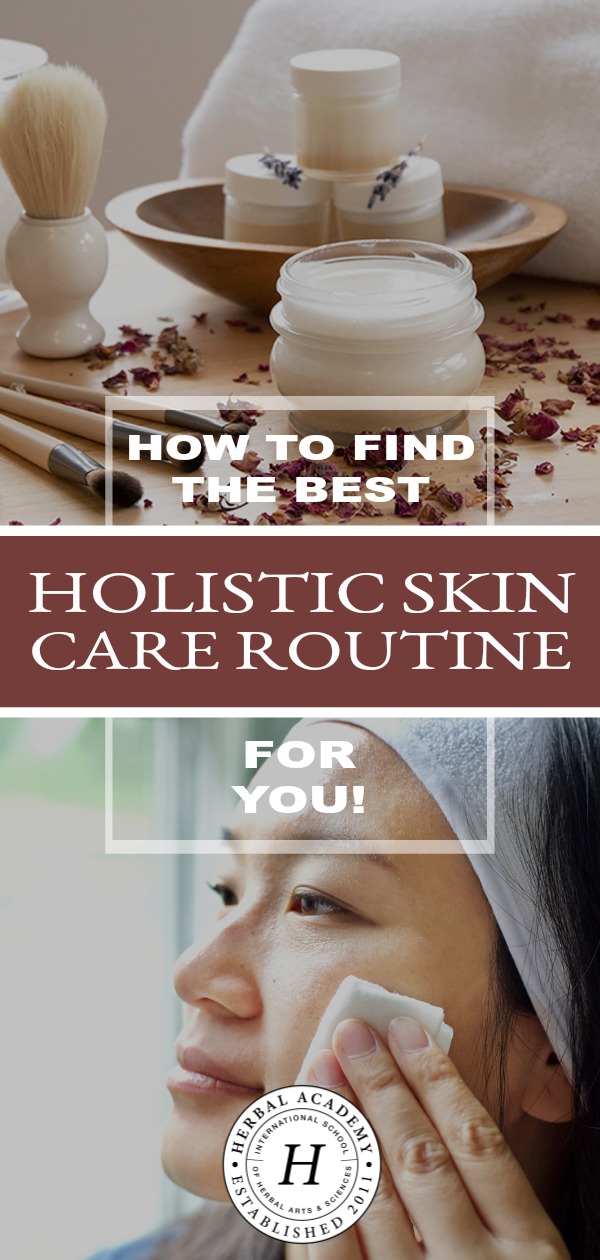
REFERENCES
Frawley, D. (2000). Ayurvedic healing. Twin Lakes, WI: Lotus Press.
Groves, M. N. (2016). Body into balance: An herbal guide to holistic self-care. North Adams, MA: Storey Publishing.
Igler, B. (2016). Making herbal medicines workshop. California College of Ayurveda. Nevada City, CA.








